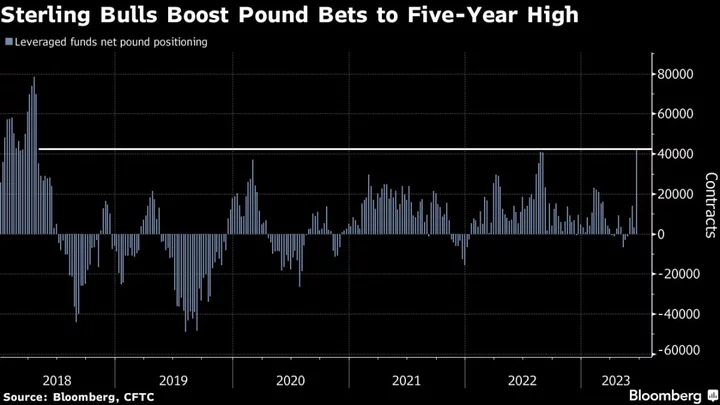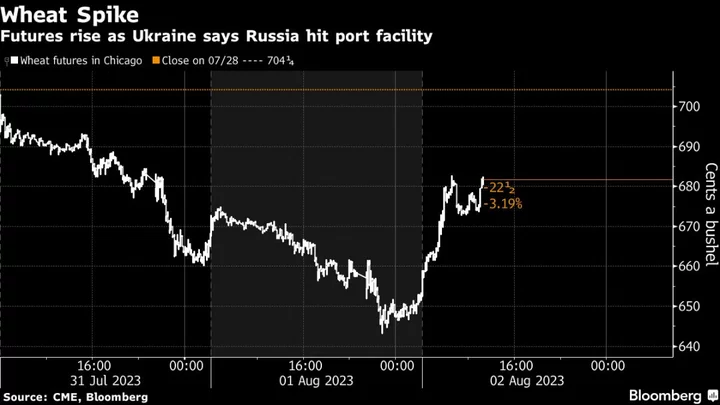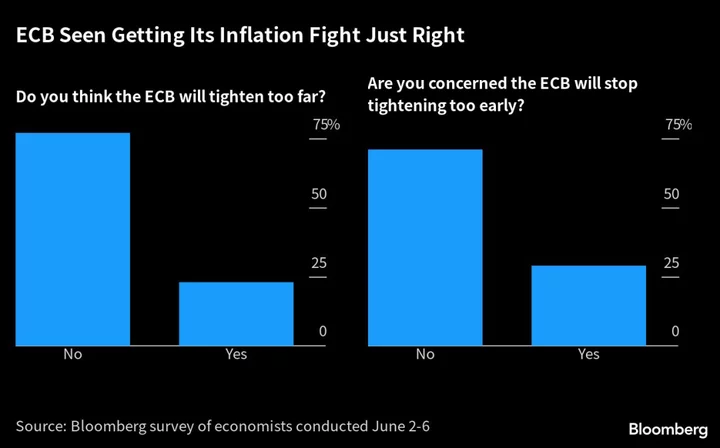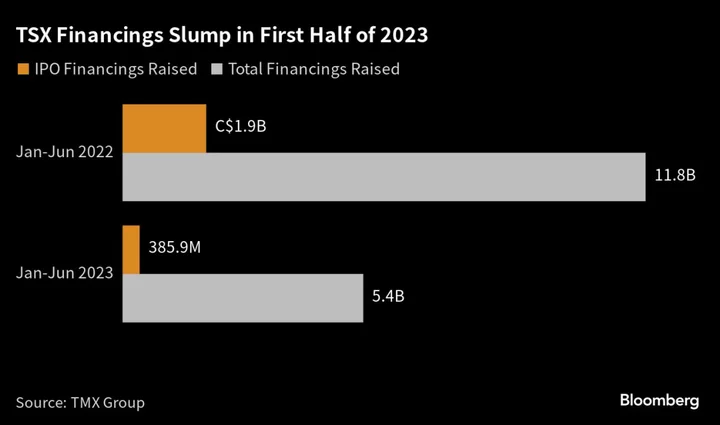Canada’s economy unexpectedly shed jobs last month, signaling a softening labor market at the beginning of the second half of this year.
The country lost 6,400 jobs in July, while the unemployment rate rose to 5.5%, the third straight monthly increase, Statistics Canada reported Friday in Ottawa. The figures missed the median estimate for a gain of 25,000 positions in a Bloomberg survey of economists, but matched expectations for the jobless rate.
The still-tight jobs market, however, continues to boost workers’ compensation, with wages reaccelerating to 5%, beating expectations for a 4.1% gain and up from 3.9% a month earlier.
July’s data, which followed a surprise gain of 59,900 jobs in June and 17,300 losses in May, shows an economy starting to gear down under the accumulated weight of 475 basis points of rate hikes by the Bank of Canada. While a string of firm economic data earlier this year prompted Governor Tiff Macklem and his officials to raise rates again in June and July after a five-month pause, recent indicators point to fading momentum.
So far this year, monthly employment growth has averaged 22,000.
The Canadian dollar touched session lows before paring its retreat after the release of the data. USD/CAD gained as much as 0.3% to session highs of 1.3394, its strongest level since June 7, as the pair eyed the 100-day moving average at 1.3402.
Canadian two-year government yields fell to 4.68%, versus 4.74% before the report. Swaps pricing now suggests a 28% chance of a rate hike from the Bank of Canada on Sept. 6, versus 34% before.
Evidence is mounting that the central bank can keep rates on hold at that next meeting. Manufacturing, wholesale and retail data pointed to declines in June, when the economy is also expected to shrink for the first time this year. Inflation in June slowed to 2.8%, entering the central bank’s control range for the first time since March 2021.
Still, policymakers are watching for signs that rates are restrictive enough to cool the economy, and they view wage growth of this magnitude as inconsistent with bringing inflation back to the 2% target.
Further easing in overall wage growth could be on the horizon as high levels of immigration boost the pool of workers while demand slows. At the same time, employees may continue to demand higher compensation as expectations for inflation remain high.
“Today’s data is unlikely to convince the Bank of Canada that the labor market has loosened enough yet to sustainably achieve its 2% CPI target, despite the weaker headline jobs count,” said Andrew Grantham, an economist at the Canadian Imperial Bank of Commerce, in a note to investors.
Last month, total hours worked were up 0.1% on a monthly basis and rose 2.1% compared to a year earlier. That points to relatively weaker economic momentum at the start of the third quarter, when economists surveyed by Bloomberg expect growth in gross domestic product to slow to 0.4%. Preliminary data indicated output growth slowed to 1% in the second quarter.
This is the only jobs report before the next rate decision on Sept. 6, with another key data release for policymakers — July’s inflation print — coming Aug. 15. The majority of economists in a Bloomberg survey expect the bank to hold rates steady at 5%.
The data bolster the case for the bank to remain on the sidelines, said Dawn Desjardins, chief economist at Deloitte Canada, on BNN Bloomberg Television.
“They’ve been looking for slowing indication in the economy, whether it’s on the labor side or on the spending side. They’re starting to see this,” she said.
With the jobless rate in Canada rising steadily since May, the three-month moving average now stands at 5.37%, up from the 12-month low of 5%. According to a recession indicator created by US economist Claudia Sahm, once that rate rises half a percentage point or more, the economy is contracting. By that measure, if the unemployment rate holds or rises further over the next few months, it could signal Canada is entering a period of downturn.
The participation rate decreased 0.1 percentage point to 65.6%. The employment rate, or the employed proportion of the population aged 15 and older, was 62.0%, down 0.2 percentage points from a month earlier and little changed on a year-over-year basis. From January to July, the employment rate fell 0.5 percentage points, as population growth of 1.4% outpaced an 0.7% gain in employment over this period.
The Canadian labor market appears to have been “on summer vacation in July,” said Royce Mendes, head of macro strategy at Desjardins Securities, in a report to investors.
“These ebbs and flows in the headline employment readings tend to occur around turning points. The simple fact that the economy has seen employment decline in two out of the past three months suggests that the Bank of Canada’s efforts to rebalance the labor market are working.”
Employment growth in the past year has occurred in the context of historically high population growth due to record immigration levels. In July, the employment rate of core-aged recent immigrants, who landed in the previous five years, was 77.7%, down 2.3 percentage points from July 2022. In comparison, the employment rate of those born in Canada was 86.6% in July, little changed from 12 months earlier.
Job losses were led by decreases in construction, public administration, information and recreation and transportation and warehousing.
Regionally, employment rose in Alberta, New Brunswick and Prince Edward Island, while it decreased in Manitoba and Saskatchewan and was little changed in the other provinces.
Separately on Friday, one of Canada’s biggest telecommunications firms, Telus Corp., announced that it’s seeking to reduce 6,000 staff globally.
--With assistance from Erik Hertzberg and Carter Johnson.
(Tweaks headline; adds market reaction, economist quotes and chart starting in paragraph six.)
Author: Randy Thanthong-Knight









